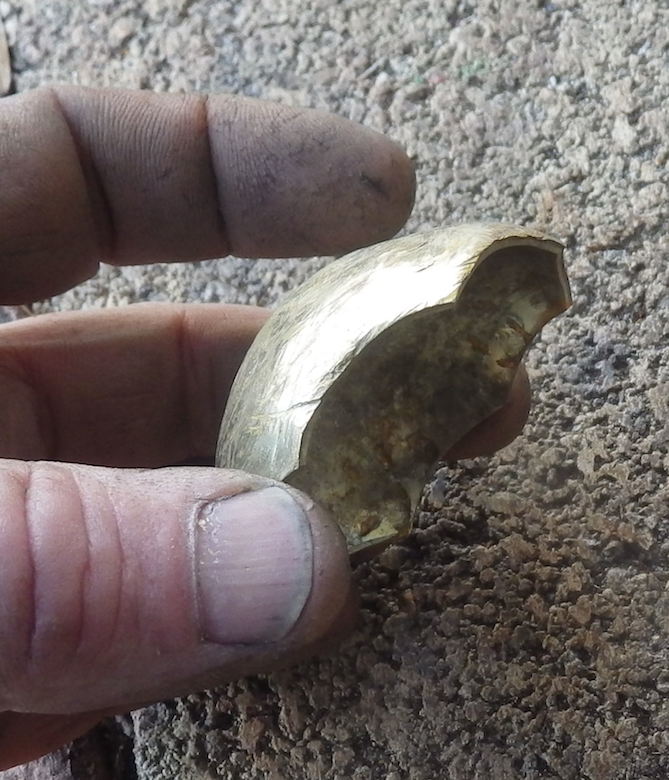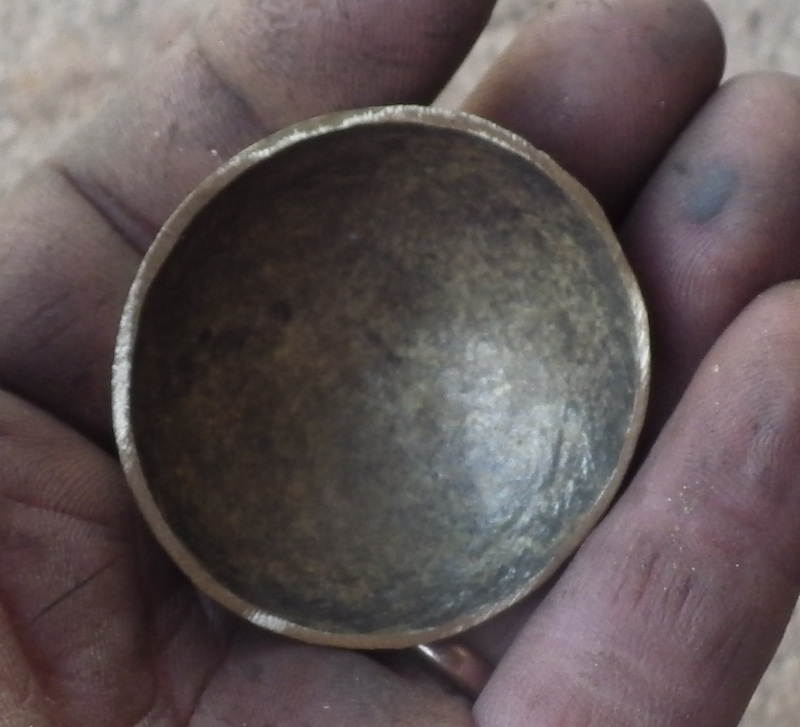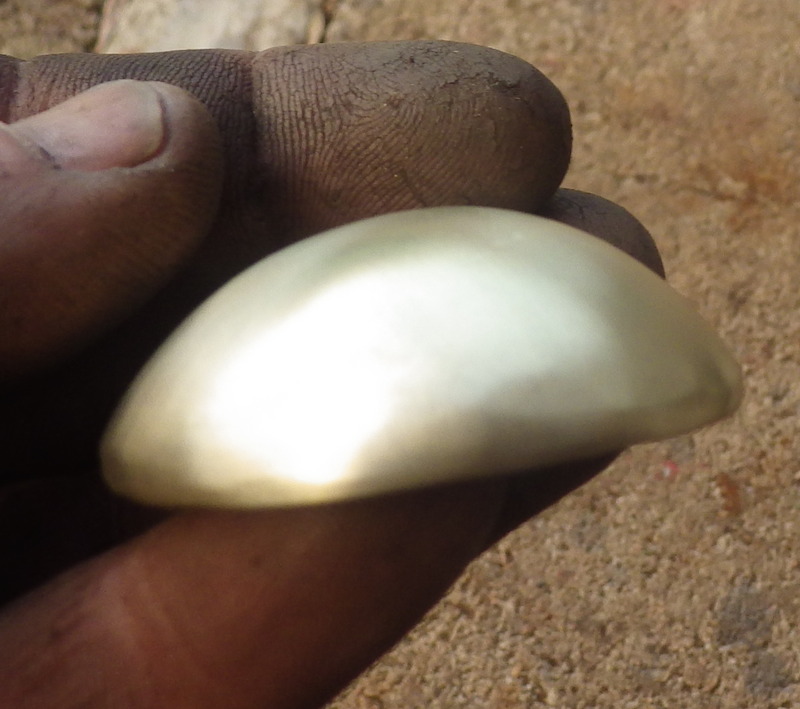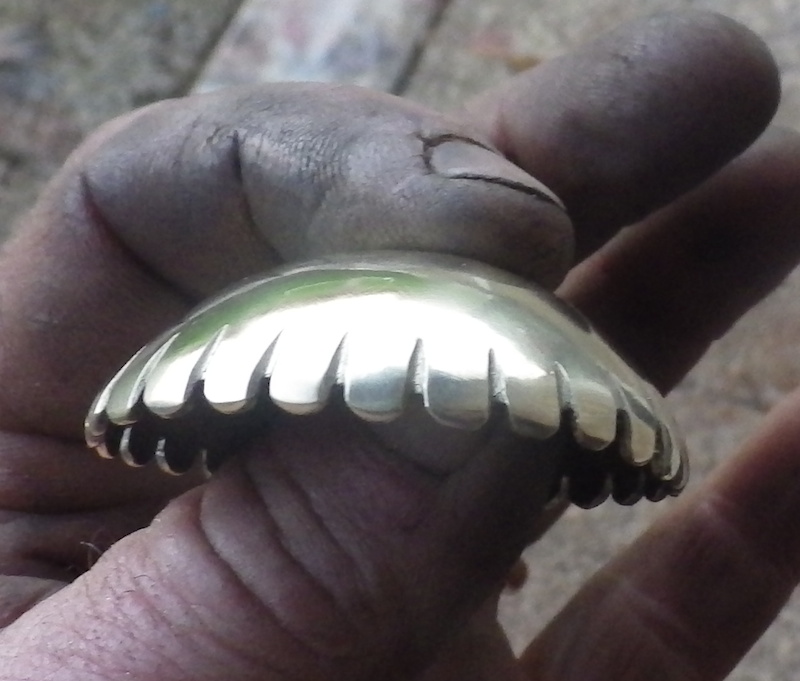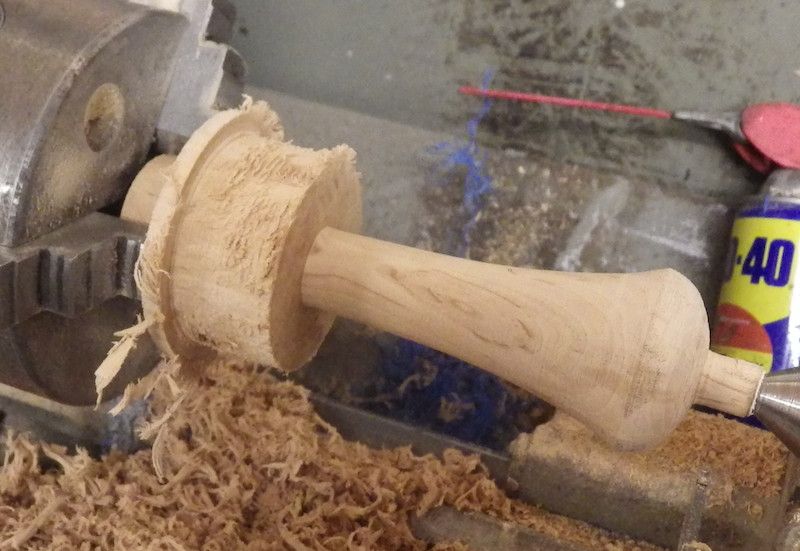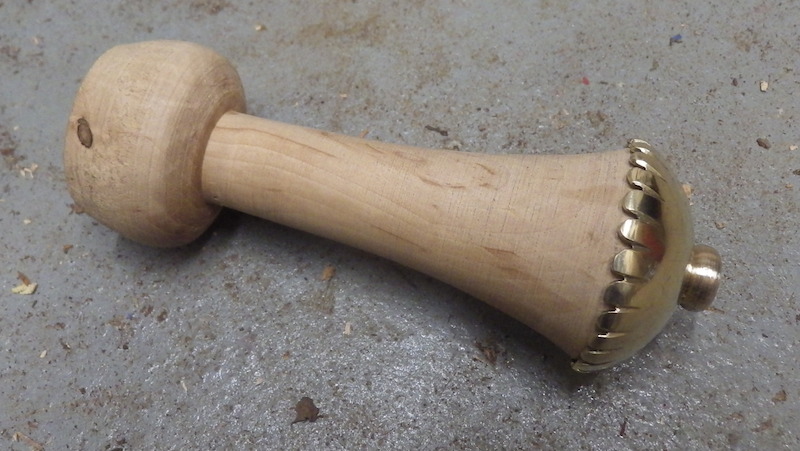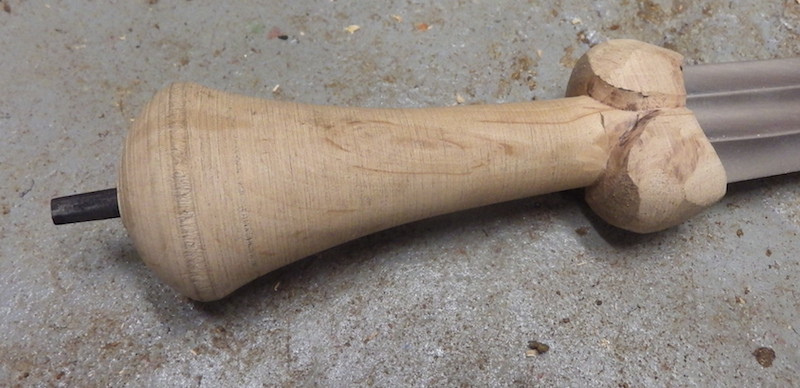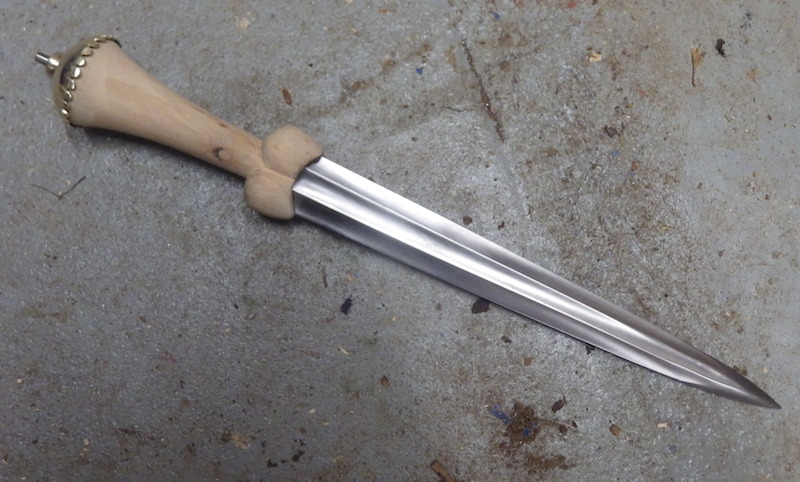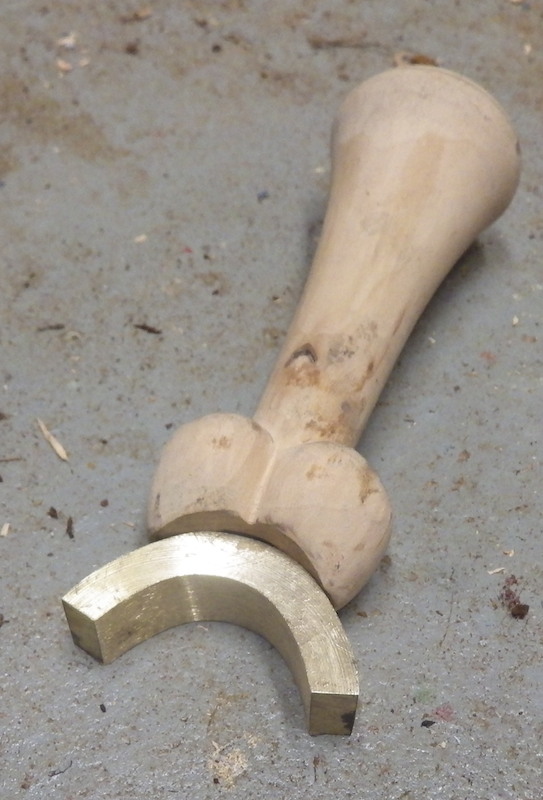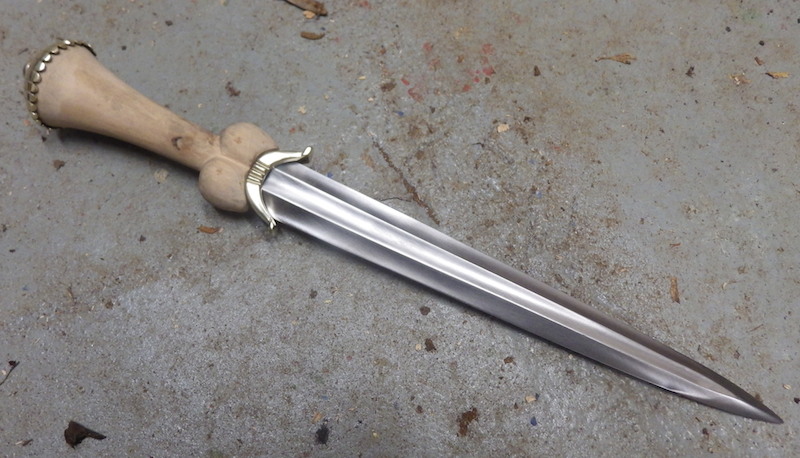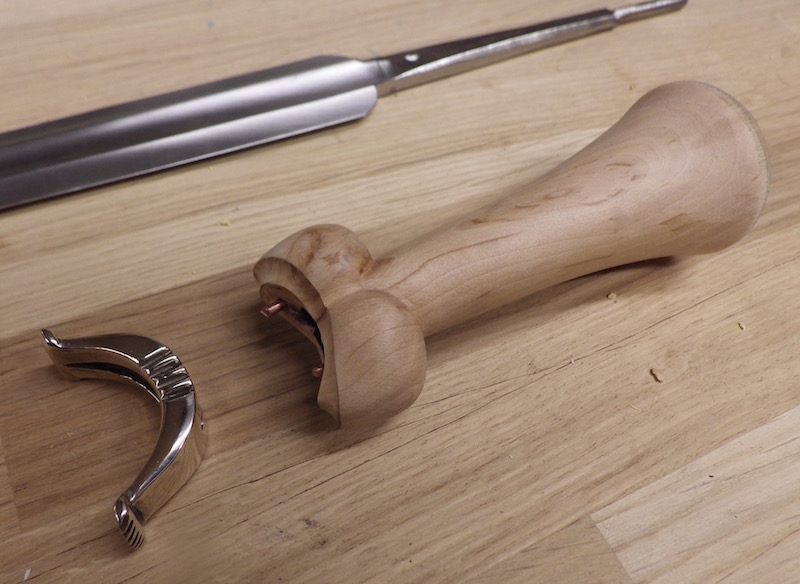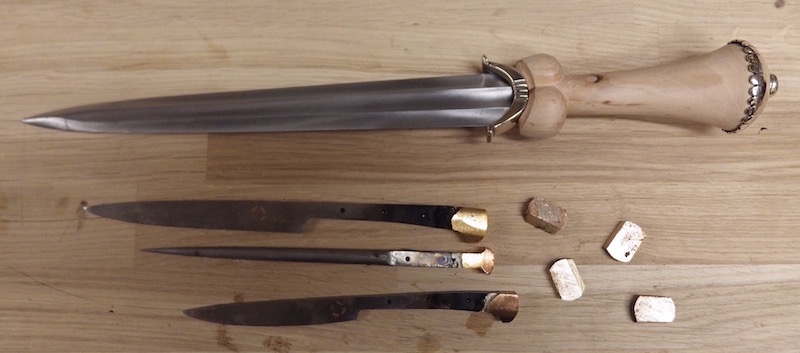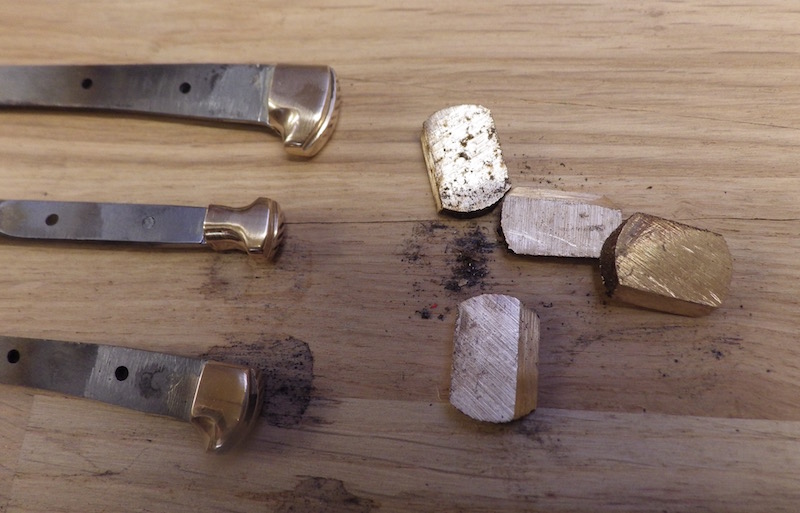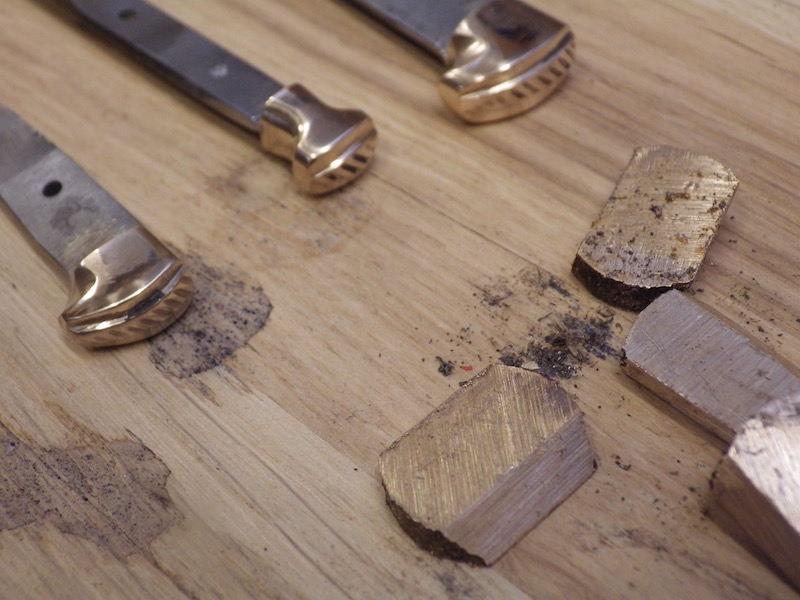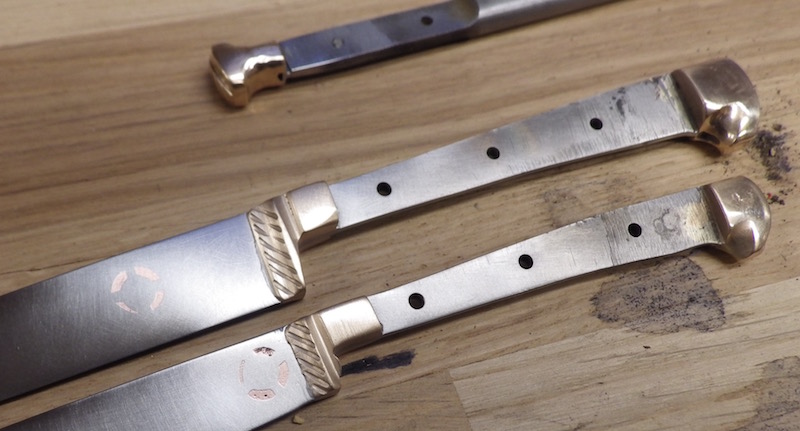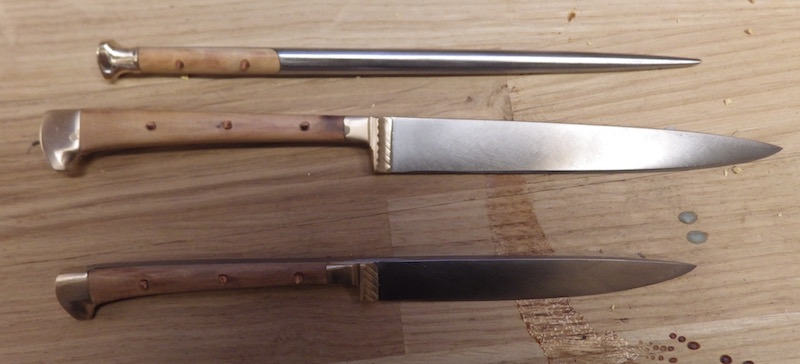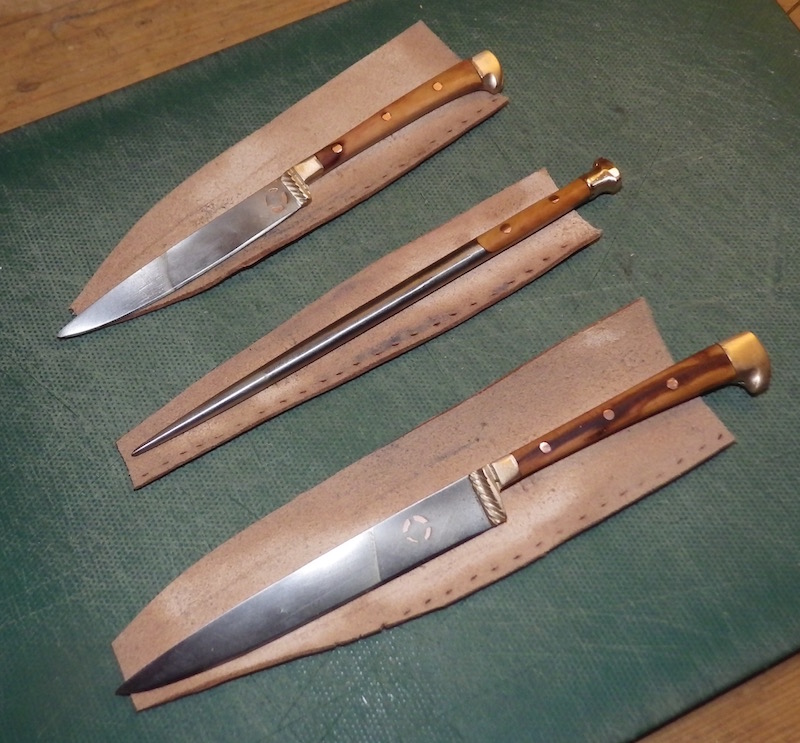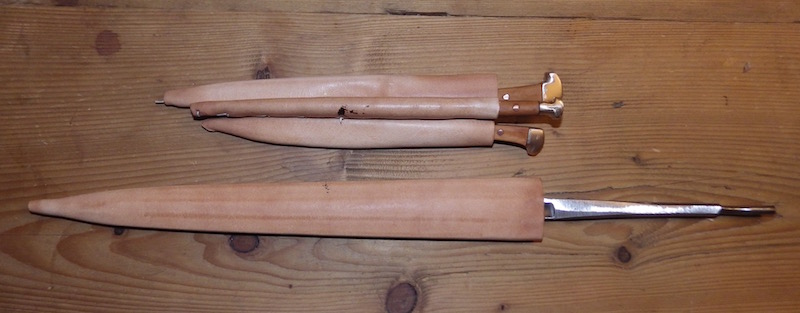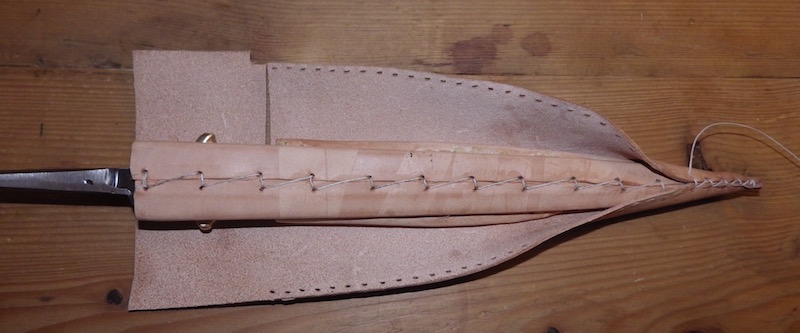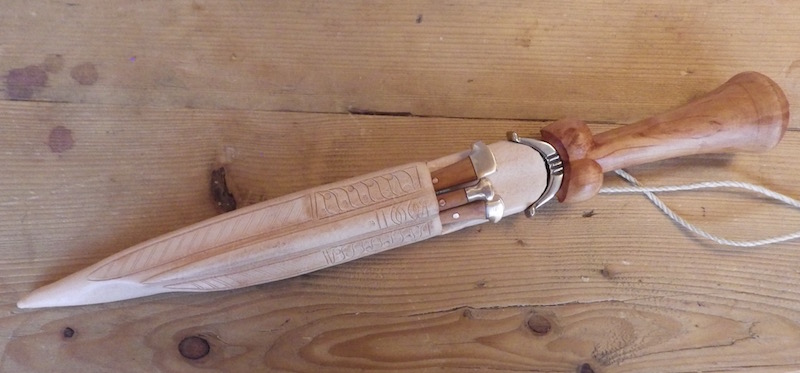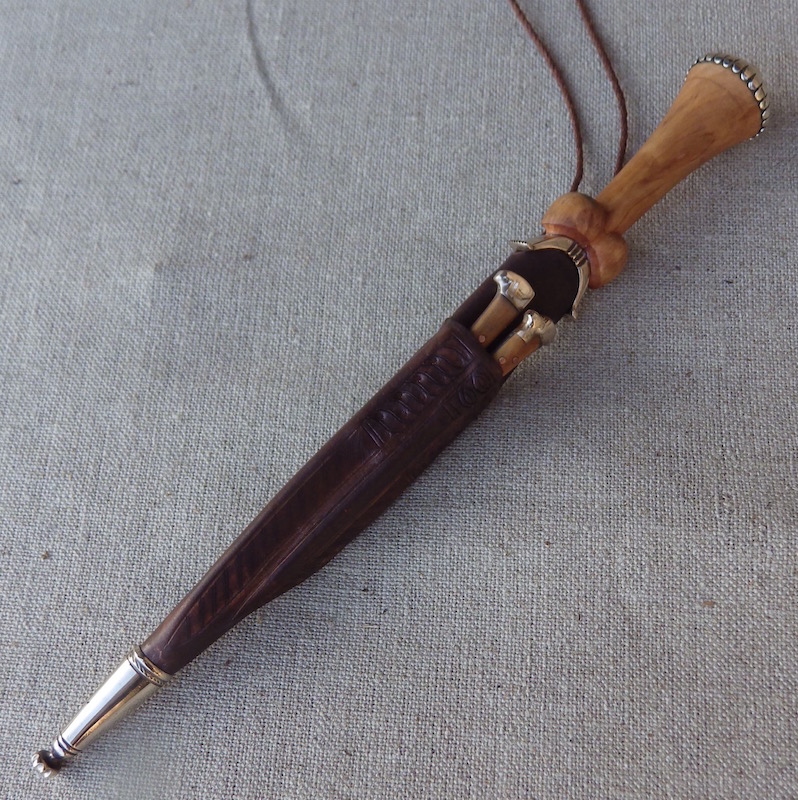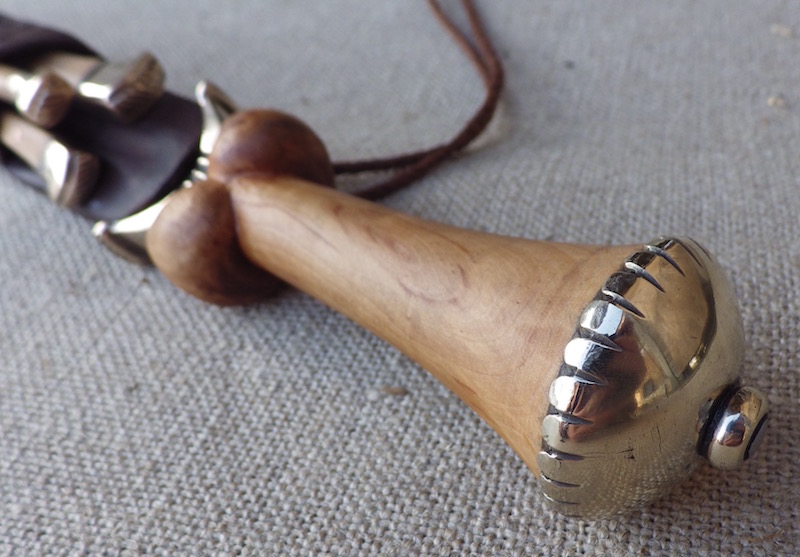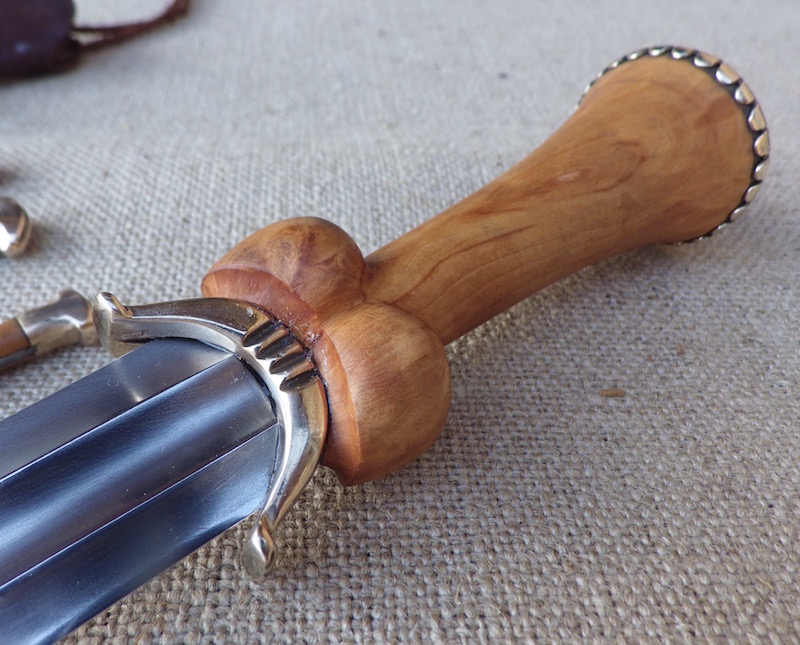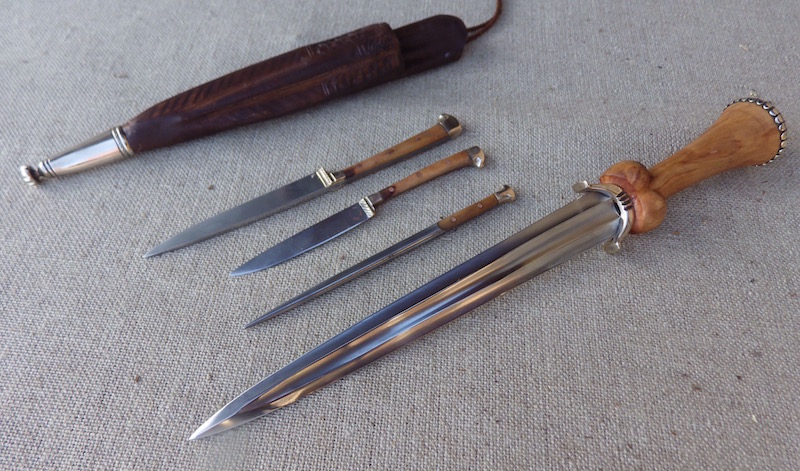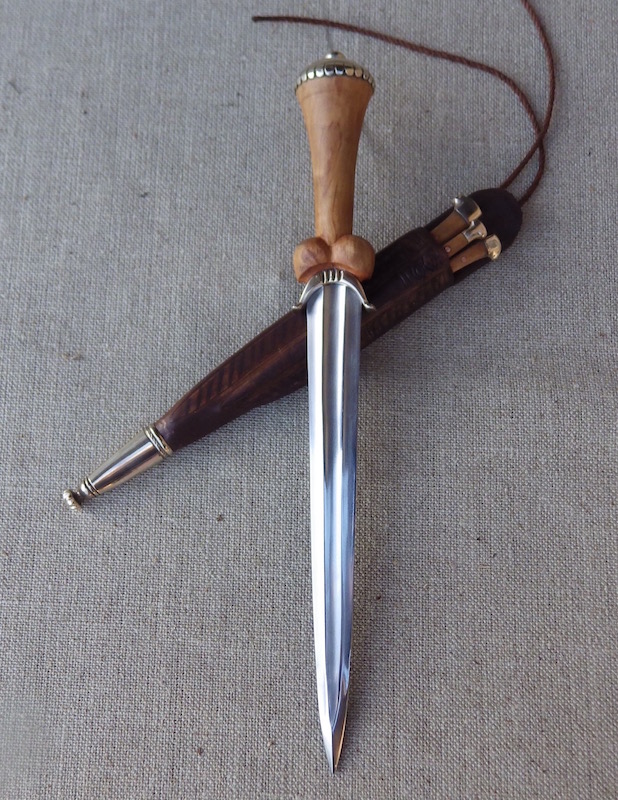I am making an interesting dagger at the moment and thought it may be interesting to run a 'work in progress' thread.
A client contacted me looking for a bollock dagger based on a sketch from a Talhoffer manuscript, which means that inevitably a deal of interpretation is required. Talhoffer was a sword and weapons master that famously wrote the 'fight book' which covered the use of many weapons and weapon combinations. The book included many sketches of pieces that presumably he was proposing as weapon designs, as many are quite strange and have no extant examples, rather than sketches of existing pieces.
I was asked to base my piece on the sketch shown below. This dagger has some unusual aspects that must be considered in view of the slight fantasy element to many of his sketches and must be viewed in the wider context of daggers of the time.
The blade as shown appears to screw on and off, this is not exhibited on any daggers I know of. It is also double sided and hollow ground, with a central full length fuller, making this again a very unusual blade form, though not unheard of.
The grip shape is fairly normal, though the very domed head of the handle is unusual, it also certainly has precedents.
The knife has by-knives, which is established for bollock daggers and other dagger types and was a popular feature particularly of German knives; however this would emphasise the higher status nature of the piece. That said, the guard is very plain and there is no pommel or pommel cap at all, making indicating a lower status piece and this would not fit with the by knives. Altogether a mixed and confused message.
So IMHO the drawing cannot be replicated 'as is' if we wish to make a dagger that could have existed at the time, so we laid out the specification as follows.
Double sided hollow ground blade with central fuller, 2 by knives and a pricker, a larger more prominent guard and a large domed pommel cap.
I cut out the form of the blade and ground on the bevels to create a diamond section blade, leaving the tip a little thicker at this stage, as in my experience grinding hollows right to the tip requires a fair bit of work and rework to get everything to line up and blend well and if you start with the right size, by the time it is all correct it will be too thin.
The next stage is to grind in the central fuller to bring it close to the tip and then the edge bevels, making sure that all the lines defined by the fullers run smoothly.
Once this is done then the fullers are slowly drawn down toward the tip and blended out to leave the very tip as a reasonably robust diamond.
More to follow next week, but if you have any questions or comments, please fire away.
Tod







